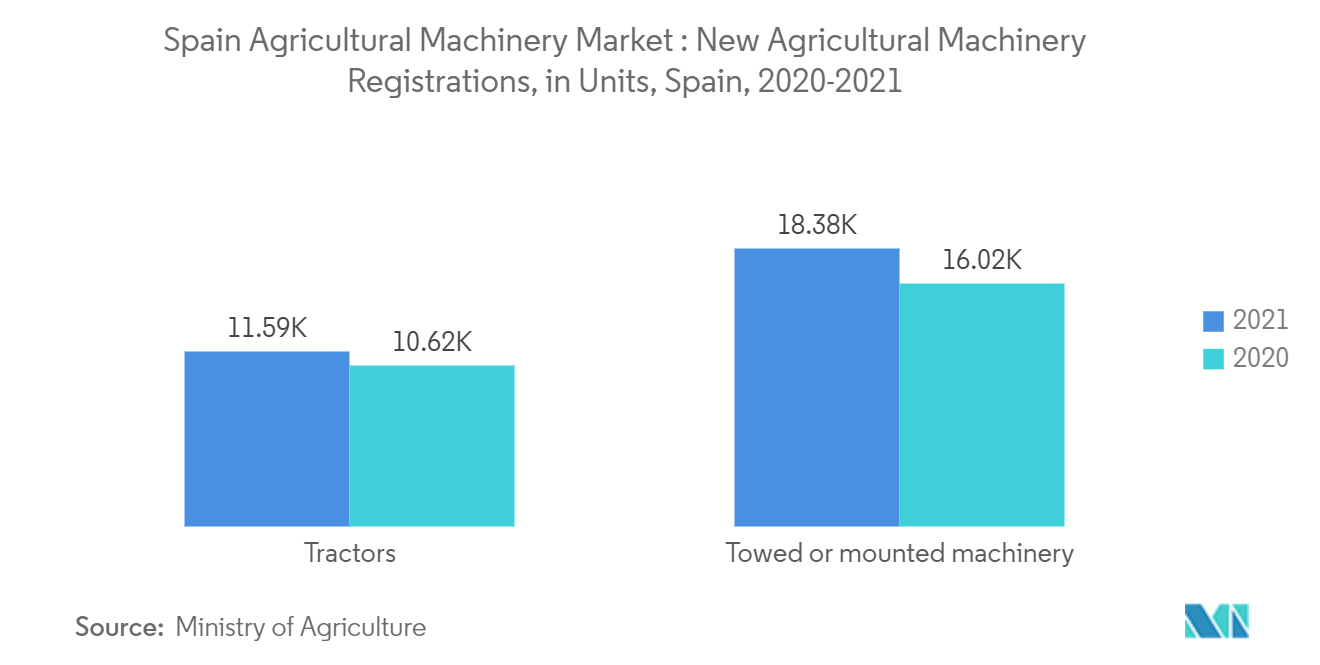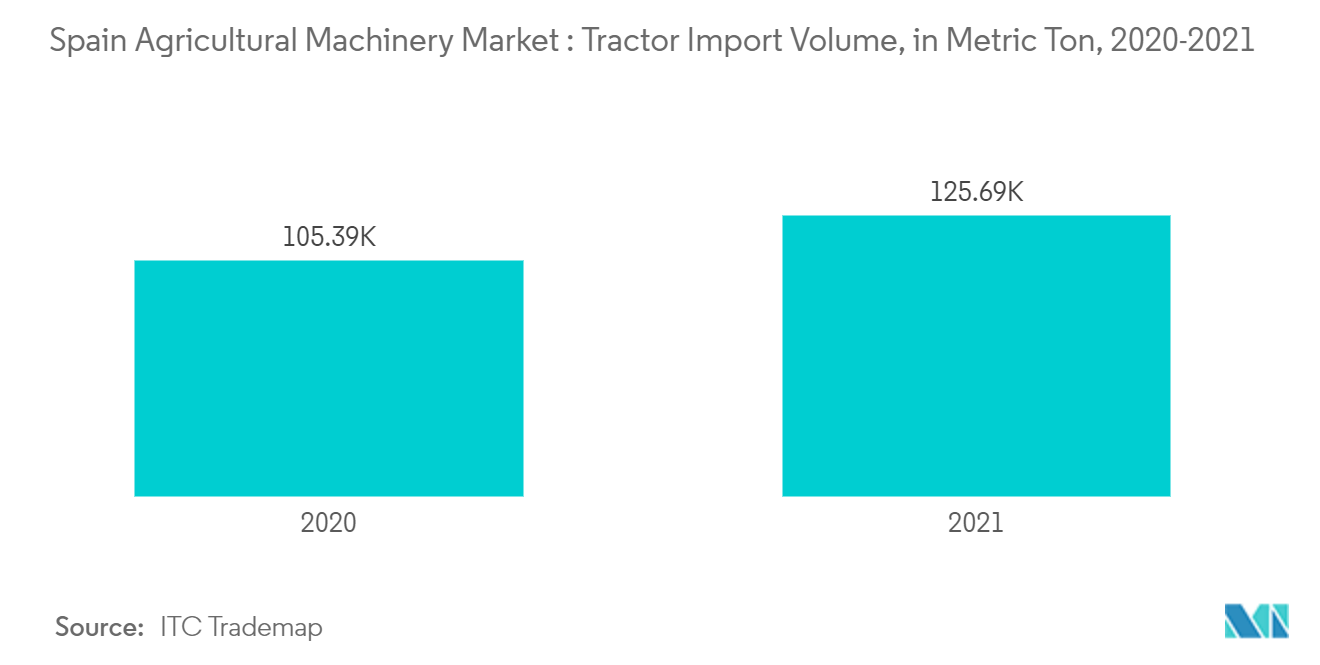Market Trends of Spain Agricultural Machinery Industry
Increasing Farm Mechanization to improve Crop Productivity
- Agriculture mechanization reduces crop cultivation costs and increases productivity by efficiently using other inputs and natural resources. Agricultural mechanization has shifted from traditional tools to sophisticated machinery to meet the targets for capacity enhancement, timeliness of farm operations, and efficient utilization of inputs. It has also been observed that the percentage growth of tractors, pump sets, and threshers has been higher in marginal and smallholding categories of the farmers who are more aware of farm mechanization's importance in the country.
- In the current scenario, farmers are achieving higher yields by adopting technologies such as drip irrigation systems and fertigation, driving the demand in the Spanish market for agricultural machinery and technology. The Government of Spain recognizes the impact of farm technologies and machinery on the country's agricultural sector, where 6% of Spain's workers are employed in agriculture, contributing to about 3% of the country's GDP. Owing to these benefits, the government is providing subsidies to farmers, making them aware of the benefits of agricultural mechanization.
- The market is currently in the growth stage, and manufacturers seek capacity augmentation in the country. Northern Spain still has little farm mechanization, and vendors can explore the province with a portfolio of medium-sized machinery suitable for hilly terrains. In the Eastern province, dry farming land is used to grow crops like wheat, barley, olives, and grapes. However, the irrigated land is much more productive and produces most of the Eastern province's agricultural output. The main crops grown in the irrigated zones are fruit, fodder, and corn (maize).
- The combined penetration of mechanized implements and tractors in the Eastern zone is close to 32%, with manual and animal-driven tools comprising 38% and 30%, respectively, during 2021. Wheat and barley are significant crops, constituting 28% and 16% of the total crop production in Eastern Spain in 2021.

Tractors Dominates the Agricultural Machinery Market
- The increasing mechanization of agriculture has led to a growing demand for row-crop tractors in recent years. This is primarily because modern farming techniques require more efficient and specialized equipment to maintain large fields and increase yields. As the availability of farm laborers becomes increasingly limited, many farmers are turning to mechanized solutions to fill the labor gap. Row-crop tractors are an ideal tool for this purpose, as they are designed to efficiently plant, cultivate, and harvest crops in large fields. They are also highly versatile, allowing farmers to use them for various tasks, such as tilling, spraying, and hauling.
- Utility tractors indeed have a lot of uses and can be very versatile machines. They are especially useful for small and medium-sized farms as they are compact, easy to operate, and can perform various tasks. The ability to attach different types of equipment to the tractor makes it a very useful tool for farmers and agricultural workers. Additionally, the low cost of utility tractors makes them attractive for those on a budget or just starting in the agricultural industry. Overall, utility tractors are a valuable asset to any farm or agricultural operation, and their flexibility and versatility make them a popular choice among farmers and agricultural workers.
- According to the European Agricultural Machinery Association (CEMA), tractor registrations in Spain increased by 10.0% in 2021 from the previous year, but the 10,905 units registered were 1.2% below the previous 5-year on average units. By type of tractor, 94 were crawlers, 5,278 were standard, and 5533 were narrow tracks.


